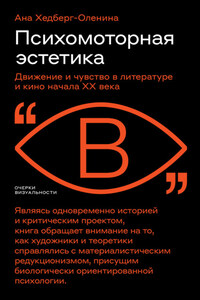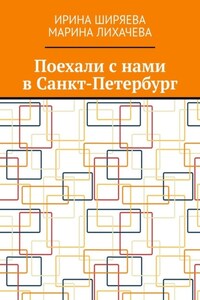Published in this series
BACHMAN: Fundamental Considerations in Language Testing
BACHMAN and PALMER: Language Testing in Practice
BRUMFIT: Individual Freedom and Language Teaching
BRUMFIT and CARTER (eds.): Literature and Language Teaching
CANAGARAJAH: Resisting Linguistic Imperialism in Language Teaching
COHEN and MACARO (eds.): Language Learner Strategies
COOK: Discourse and Literature
COOK: Language Play, Language Learning
COOK and SEIDLHOFER (eds.): Principle and Practice in Applied Linguistics
DÖRNYEI: Research Methods in Applied Linguistics
ELLIS: SLA Research and Language Teaching
ELLIS: Task-based Language Learning and Teaching
ELLIS: The Study of Second Language Acquisition
ELLIS: Understanding Second Language Acquisition
ELLIS and BARKHUIZEN: Analysing Learner Language
FOTOS and NASSAJI (eds.): Form-focused Instruction and Teacher Education
HOLLIDAY: The Struggle to Teach English as an International Language
HOWATT: A History of English Language Teaching
JENKINS: The Phonology of English as an International Language
JENKINS: English as a Lingua Franca: Attitude and Identity
KERN: Literacy and Language Teaching
KRAMSCH: Context and Culture in Language Teaching
LANTOLF (ed.): Sociocultural Theory and Second Language Learning
LANTOLF and THORNE: Sociocultural Theory and the Genesis of Second Language Development
MACKEY (ed.): Conversational Interaction and Second Language Acquisition
MEINHOF: Language Learning in the Age of Satellite Television
NATTINGER and DECARRICO: Lexical Phrases and Language Teaching
PHILLIPSON: Linguistic Imperialism
SEIDLHOFER (ed.): Controversies in Applied Linguistics
SELIGER and SHOHAMY: Second Language Research Methods
SKEHAN: A Cognitive Approach to Language Learning
STERN: Fundamental Concepts of Language Teaching
STERN (eds. P. Allen and B. Harley): Issues and Options in Language Teaching
TARONE and YULE: Focus on the Language Learner
WIDDOWSON: Aspects of Language Teaching
WIDDOWSON: Defining Issues in English Language Teaching
WIDDOWSON: Practical Stylistics
WIDDOWSON: Teaching Language as Communication
Great Clarendon Street, Oxford OX2 6DP
Oxford University Press is a department of the University of Oxford. It furthers the University’s objective of excellence in research, scholarship, and education by publishing worldwide in
Oxford New York
Auckland Cape Town Dar es Salaam Hong Kong Karachi Kuala Lumpur Madrid Melbourne Mexico City Nairobi New Delhi Shanghai Taipei Toronto
With offices in
Argentina Austria Brazil Chile Czech Republic France Greece Guatemala Hungary Italy Japan Poland Portugal Singapore South Korea Switzerland Thailand Turkey Ukraine Vietnam
OXFORD and OXFORD ENGLISH are registered trade marks of Oxford University Press in the UK and in certain other countries
© Oxford University Press 2008
The moral rights of the author have been asserted
Database right Oxford University Press (maker)
First published 2008
2012 2011 2010 2009
10 9 8 7 6 5 4 3 2
No unauthorized photocopying
All rights reserved. No part of this publication may be reproduced, stored in a retrieval system, or transmitted, in any form or by any means, without the prior permission in writing of Oxford University Press, or as expressly permitted by law, or under terms agreed with the appropriate reprographics rights organization. Enquiries concerning reproduction outside the scope of the above should be sent to the ELT Rights Department, Oxford University Press, at the address above
You must not circulate this book in any other binding or cover and you must impose this same condition on any acquirer
Any websites referred to in this publication are in the public domain and their addresses are provided by Oxford University Press for information only. Oxford University Press disclaims any responsibility for the content
ISBN: 978 0 19 442245 1
Printed in China
Preface and Acknowledgments
My aim in the present book and my previous work has been to assemble specific evidence regarding the nature of formulaic language and to develop theoretical models that can explain it. Part of that endeavour entails evaluating the applicability of an explanation at the extremes of its range, and that is why this book is about boundaries. As the Introduction explains, it is not to be expected that all linguists agree with my conclusions, nor does it matter. What matters is that we continue to extend our exploration until, by degrees, we establish clearer boundaries between what is and is not formulaic.
The book has been in the planning for several years, during which I have talked to many people, engaged in huge amounts of email correspondence, read a lot of books and papers, and listened to a great many conference presentations. Some forums have been particularly valuable in inspiring new ideas, including the 2005 Phraseology conference in Louvain-la-Neuve, the 2007 Formulaic Language Symposium at Milwaukee, and the Cardiff meetings and international postgraduate conferences of the Formulaic Language Research Network. Even though I try to keep notes of conversations, useful quotes and so on, it is certainly possible that I have appropriated others’ ideas without realizing it. If I have, I apologize, and trust it will be construed as flattery.








